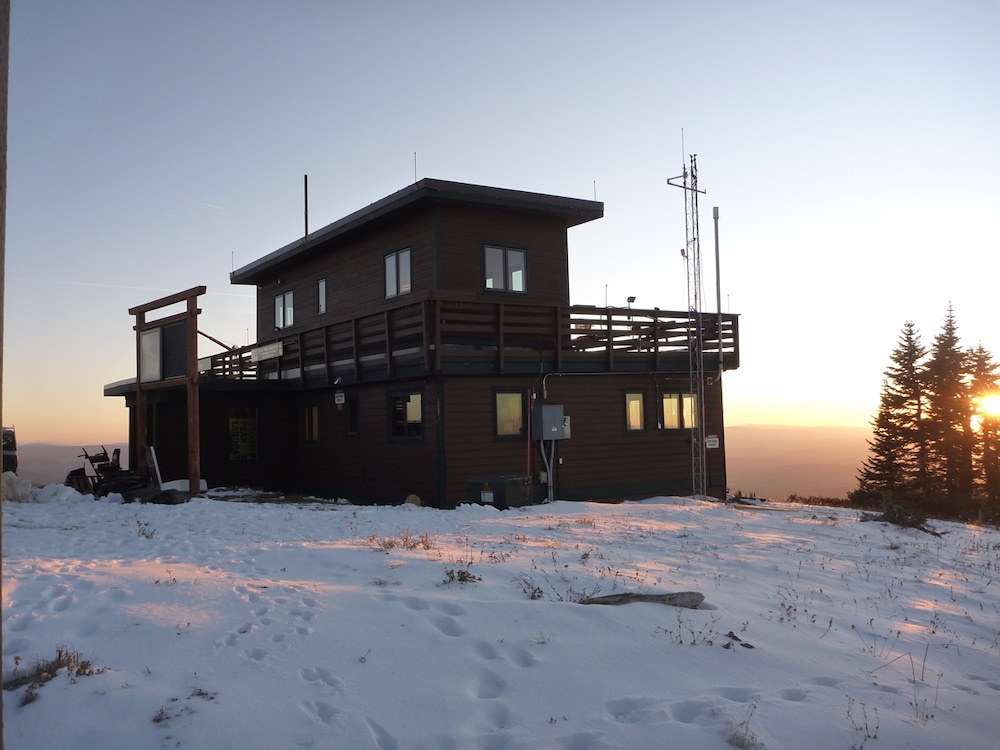How Power Plant Emissions Affect Cloud Formation in Utah Mountains (and Likely Elsewhere)

 Why you can trust us
Why you can trust us
Founded in 2005 as an Ohio-based environmental newspaper, EcoWatch is a digital platform dedicated to publishing quality, science-based content on environmental issues, causes, and solutions.
Humans have been altering the planet in many ways, from the extreme weather of climate change to the destruction of wildlife habitat and ecosystems. Now, human activity is affecting the chemistry of the atmosphere, and it could change when and how clouds form, even in the remotest of locations.
A new University of Utah study has found that new aerosol particles are forming on a Colorado mountaintop every other day, on average, a press release from The University of Utah said. The scientists and their colleagues believe these particles came from gases emitted by power plants close to Storm Peak Laboratory (SPL), where the study was conducted, and that they are large enough that water can condense around them, resulting in the formation of clouds.

Gannet Hallar, a professor of atmospheric sciences at the University of Utah, said there isn’t any reason clouds forming from aerosol particles would be happening at SPL and nowhere else.
“Just because we only measure there doesn’t mean it’s not happening at all other remote sites in the Intermountain West,” Hallar said, according to the press release.
The study, “Seasonal significance of new particle formation impacts on cloud condensation nuclei at a mountaintop location,” was published in the journal Atmospheric Chemistry and Physics.
In order to accurately model what part aerosols and clouds play in climate change, it was necessary for the scientists to connect the growth of aerosols with measurements of cloud condensation nuclei (CCN) using new statistical methods.
CCN are the tiny particles of salt or dirt — about one-tenth the diameter of spider web silk — in the air that are the seeds of cloud formation. Water vapor condenses around them to form clouds.
More clouds — including those that are reflective — form when there are increased aerosols in the atmosphere, but can new aerosol particles that come from human-caused emissions and are much smaller than CCN grow to become CCN? The answer to that question isn’t yet known, and climate models haven’t been developed that integrate the relationship between clouds and aerosols, the press release said.
“A different instrument called a cloud condensation nuclei counter can expose aerosol to a saturated environment which mimics the environment that aerosol will activate as a CCN. We are then able to determine whether or not a particle is acting as a CCN by evaluating the total number of CCN,” recent graduate of The University of Utah Noah Hirshorn told EcoWatch in an email. “We found that the CCN concentration after [new particle formation (NPF)] events in the spring and winter would increase compared to times without NPF which helped us determine that aerosol from NPF was enhancing CCN concentrations.”
Clouds move water around, reflect solar energy and generally play a big part in Earth’s climate. The ability to model clouds could help models predicting changes in our climate become more accurate.
In order to comprehend the relationship between new aerosol particle formation and CCN, Hallar, Hirshorn and their colleagues examined a record of aerosol measurements at SPL going back 15 years. The laboratory is located at Colorado’s Steamboat ski resort at an elevation of more than 10,500 feet.
The authors of the study wrote that, due to its remote location, “clean atmospheric conditions are common at the laboratory,” the press release said.
Upwind of the laboratory is a different story, with sulfur dioxide spewing from several power plants. In the atmosphere, sulfur dioxide changes into sulfuric acid, which has the capability of forming into particles.
Previous NPF measurements used three-dimensional charts with aerosol particle measurements over an extended period. In order to identify the formation of new particles, scientists look for patterns in eruptions of new particles and the particles’ persistent growth.
“Previous work at Storm Peak Laboratory… and other mountaintop locations observe aerosol new particle formation… events by taking direct measurements of aerosols and directly observing them as they grow to larger sizes over time,” Hirshorn told EcoWatch. “Sulfuric acid, which can be formed from anthropogenic emissions, is important for NPF in the atmosphere as seen in previous research. As part of our study, we found that NPF events that grew to CCN-relevant sizes occurred more commonly in the spring and winter. At SPL, sulfuric acid is more prominent in these two seasons, as seen in previous research, which led us to determine that the sulfur dioxide from nearby powerplants is important in allowing NPF events to reach sizes where they can activate as cloud condensation nuclei.”
Now, Hallar, Hirshorn and their colleagues, including University of Utah graduates Lauren Zuromski and Christopher Rapp, have developed a new method of classifying NPF events. The new method, based on statistics, has improved the efficiency and accuracy of the detection of these events and comports with manual methods.
The researchers used the new method and discovered that NPF events took place at SPL on half of the days between 2006 and 2021. The researchers also found that the NPF events increased the amount of CCN in the winter by a factor of 1.36 and by a factor of 1.54 in the spring.
“Every other day we see gases that are condensing into nanoparticles, which are growing large enough to uptake water and become cloud droplets,” said Hallar in the press release.
“This provides that clear connection from a new particle formation event all the way to cloud condensation nuclei. The biggest direct benefit of that is probably going to be for climate modelers to be able to connect one to the other. It fills in a lot of gaps,” Hirshorn added.
At SPL, the power plants located upwind created a specific atmospheric chemistry, but the researchers say it is possible that NPF is happening at similar rates in other remote locations throughout the globe. The team is working on using their new statistical method at South American and European mountaintop observatories, Hirshorn said.
“[T]here is a lot of modeling work that shows aerosols from NPF eventually becoming CCN. Observational work also shows aerosol reaching CCN-relevant sizes in different locations across the world. Our study is unique because we were able to follow aerosol particles from NPF and observe them activating as CCN, not just reaching CCN-relevant sizes,” Hirshorn told EcoWatch.
On Utah’s Wasatch Front, where The University of Utah is located, the atmospheric chemistry is affected by emissions that get trapped by temperature inversion events in winter, degrading the area’s air quality.
“About 70% of the aerosol measured during strong inversion events is ammonium nitrate,” Hallar said in the press release, referring to a 2014 study conducted by the Utah Department of Air Quality and Brigham Young University. “That is formed through this same new particle formation process.”
How can humans decrease the amount of aerosols in the air?
“That depends. Anthropogenic aerosols directly emitted from smoke and industrial emissions can be reduced by directly addressing the source of the emissions. It is much harder to control natural aerosols, such as sea salt and dust, because these particles can enter the atmosphere through natural pathways,” Hirshorn told EcoWatch.
It is likely that the power plants upwind of SPL will be decommissioned within 10 to 15 years, making it a good place to study how NPF might be impacted by reductions in global greenhouse gas emissions.
“In about 20 years we may have an answer to that,” Hirshorn said in the press release. “My hypothesis is you would see a decreased frequency in new particle formation events. It wouldn’t cut out new particle formation entirely, but the frequency would go down.”
Subscribe to get exclusive updates in our daily newsletter!
By signing up, you agree to the Terms of Use and Privacy Policy & to receive electronic communications from EcoWatch Media Group, which may include marketing promotions, advertisements and sponsored content.

 233k
233k  41k
41k  Subscribe
Subscribe 




